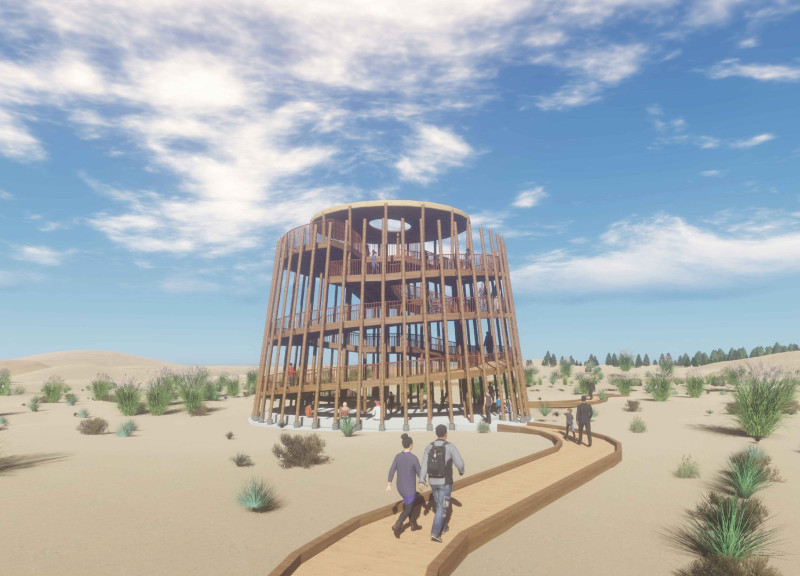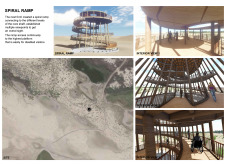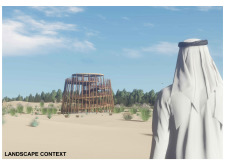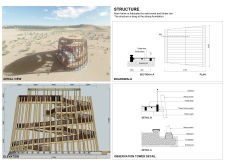5 key facts about this project
The Flamingo Nest serves as an observation area and educational hub, allowing for close encounters with local wildlife while facilitating learning opportunities related to ecology and conservation. Key components of the project include multiple viewing platforms, a spiraled ramp for accessibility, and extensive use of local materials that reflect both the site’s ecosystem and aesthetic considerations.
The design utilizes solid wood, timber bars, and concrete foundations, each selected for their sustainability and durability in harsh weather conditions. The wooden elements contribute to a warm, inviting atmosphere, while the concrete ensures structural integrity. The use of these materials not only enhances the longevity of the building but also aligns with the principles of environmental responsibility.
The unique approach of the Flamingo Nest lies in its reflective design methodology, which integrates architecture with natural inspiration rather than imposing a rigid structure onto the landscape. The elevated walkways and observation areas allow for unobstructed views of the surrounding terrain, creating a seamless interaction between the indoor and outdoor environments. This focus on fluidity differentiates the project from typical observation buildings, which often prioritize function over relationship with the natural setting.
Moreover, the project integrates various ecological features to minimize environmental impact. Water-efficient landscaping and the use of renewable materials demonstrate a commitment to sustainable architecture. The design fosters a connection with the ecosystem while providing practical solutions for energy efficiency.
In summary, the Flamingo Nest exemplifies a thoughtful blend of architecture and ecology. The project invites exploration, encouraging visitors to appreciate the delicate balance between the built and natural environments. For a deeper understanding of the architectural plans, sections, and overall design strategies, readers are encouraged to explore the project presentation further. Engaging with these elements can provide insights into the innovative ideas and methodologies that define the Flamingo Nest.


























